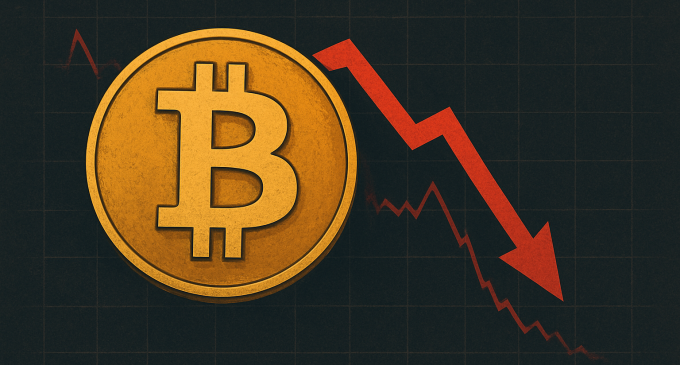
Introduction
Bitcoin has experienced a sharp fall below the 90000 mark marking its weakest price level in seven months and triggering widespread concern across global financial and cryptocurrency markets. This decline has not only erased a significant portion of the year’s gains but has also raised questions about the health of the broader crypto ecosystem. The recent price drop is the result of a perfect storm involving heavy institutional outflows, declining liquidity, macroeconomic uncertainty, technical breakdowns and shifts in investor psychology. In this detailed long form analysis we examine the factors that fueled this downturn, the market conditions shaping Bitcoin’s trajectory and what investors should be watching in the coming weeks.
The Slide Below 90000 What Sparked The Sharp Decline?
Bitcoin’s descent below 90000 came suddenly but the underlying stress had been building for weeks. One of the immediate contributors to the fall was unprecedented selling by large institutional investors particularly through spot Bitcoin exchange traded funds. These ETFs which had helped drive Bitcoin to earlier highs reversed course and began shedding massive amounts of BTC. The most significant indicator of this shift came from record daily outflows from major funds which signaled that institutions were reducing risk exposure and locking in profits. When such large investors exit quickly the market feels the impact immediately because they account for a substantial portion of trading volume.
At the same time Bitcoin’s decline spilled into equities connected to the crypto economy. Shares of crypto exchanges mining companies and blockchain development firms all recorded notable drops as investors reassessed market sentiment. With both equity and digital asset markets weakening simultaneously the selloff became more widespread and amplified.
Massive ETF Outflows And The Institutional Retreat
Institutional participation has become a major force in crypto price action especially since the introduction of spot Bitcoin ETFs. Earlier in the year these funds helped push Bitcoin upward as they attracted billions of dollars in inflows. However the recent trend has reversed dramatically as these ETFs reported historically large outflows. Such aggressive selling from institutional desks is a strong signal that risk appetite has shifted. Many large holders appear to be reducing exposure in anticipation of continued volatility or simply taking profits after a strong year.
Heavy outflows weaken the market in two primary ways. First they create downward pressure directly through the selling of BTC. Second they send a psychological signal to retail and smaller investors that big players are expecting lower prices ahead. This combination often leads to cascading selloffs as fear increases. Additionally some on chain data indicates that long term holders have begun transferring coins back to exchanges, a move commonly associated with intent to sell rather than accumulate. When this behavior aligns with institutional outflows it amplifies bearish momentum.
Macroeconomic Pressures And Investor Risk Aversion
Broader global macroeconomic conditions have also played a major role in Bitcoin’s decline. Growing uncertainty around interest rate policy especially in the United States has pushed investors into a more defensive stance. Expectations that rate cuts may be delayed or scaled back have prompted investors to move away from high risk assets. Bitcoin which tends to behave like a high volatility macro sensitive asset is often among the first to react when risk sentiment turns negative.
In addition declining performance across major stock indices contributed to the risk off mood. When traditional markets weaken investors often reassess risk exposure across all asset classes including crypto. As equities cooled investors reduced leverage and trimmed positions in speculative markets. This retreat from risk contributed directly to Bitcoin’s selloff and encouraged traders to move capital into safer assets.
Technical Breakdown And Breach Of Key Support Levels
Bitcoin’s technical structure has also been flashing warning signals. Several important support levels were tested repeatedly before finally breaking. The drop below 94000 was a particularly notable technical failure because this level had acted as a strong floor for weeks. Once it was broken the next wave of selling quickly accelerated the decline to below 90000.
The market has also been showing signs of potentially forming a classic bearish pattern known as a death cross. This occurs when a shorter term moving average crosses below a longer term moving average signaling sustained bearish momentum. While technical patterns alone do not determine price outcomes they often influence automated trading systems and short term speculators. As a result the possibility of a death cross has added anxiety and contributed to increased sell pressure.
The decline in market depth has made Bitcoin more vulnerable to sharp price movements. Market depth refers to the amount of buy and sell orders at various price levels. With thinner liquidity even moderate sell orders can lead to disproportionately large price drops. This liquidity weakness has made each wave of selling more impactful than it otherwise would be.
Liquidity Thinning And The Feedback Loop Of Selling
Liquidity conditions in the cryptocurrency market have been weakening steadily over recent weeks. As fewer large buyers remain active the market becomes more sensitive to downward moves. When liquidity thins a small trigger can spark a much larger reaction. This dynamic played out clearly as Bitcoin fell through its support zones. When the price dropped sellers began rushing to exit positions which further reduced liquidity and encouraged even more selling. This type of feedback loop is common during sharp downturns and can push prices lower much faster than expected.
Miner Behavior A Shift Toward Cautious Accumulation
Bitcoin miners play a crucial role in the ecosystem not just by validating transactions but also through their selling and holding patterns. Earlier in the year miners were selling significant portions of their newly mined coins often to cover operating expenses during periods of rising difficulty. Recently however there has been a noticeable shift. After securing additional capital many miners have slowed their selling and begun accumulating coins instead.
This behavior suggests that miners may believe Bitcoin is undervalued at current prices or that they expect future recovery. However the accumulation has been cautious rather than aggressive indicating that while miners see long term potential they are still wary of near term volatility.
Market Sentiment Fear Dominates As Prices Slide
Beyond technical and macro factors, market psychology has played a powerful role. Sentiment indicators show that fear has become the dominant emotion among traders. The steep decline from earlier highs has shaken confidence and pushed many traders into a defensive posture. Periods of elevated fear often lead to overreaction where selling becomes exaggerated relative to fundamental conditions.
The broader crypto market has also seen sharp declines with major altcoins such as Ethereum Solana and others losing significant value. As the overall market weakens traders often rotate out of speculative positions and consolidate into more stable assets. This move away from risk has further contributed to Bitcoin’s decline and accelerated its fall below 90000.
Possible Stabilization Zones And Future Price Scenarios
Analysts have identified several potential support zones where Bitcoin may stabilize. The range between 83000 and 84000 is viewed as a strong candidate for short term support because it previously served as a consolidation zone. If Bitcoin can hold this range a short term recovery becomes more likely. However if this support breaks the next major zone lies between 69000 and 72000 an area that marked a significant accumulation period in earlier market cycles.
On the upside any recovery attempts will likely face resistance near 94000 and then again at the 100000 level. For Bitcoin to sustain a meaningful upward move institutional inflows would need to return and macroeconomic conditions would need to become more favorable.
Key Risks And Catalysts To Watch Going Forward
Several factors will influence Bitcoin’s path in the coming weeks. Continued ETF outflows remain a major risk because they reflect institutional sentiment. Any sustained negative flow could push prices lower. Macroeconomic conditions, especially interest rate decisions will also be critical. If rate cuts are delayed markets may continue to experience pressure. Liquidity conditions will need to improve for Bitcoin to avoid further sharp volatility and on-chain behavior such as exchange inflows and miner activity will provide insight into broader investor sentiment. Finally regulatory developments could quickly alter market dynamics either positively or negatively depending on their nature.
Conclusion
Bitcoin’s fall below 90000 represents a significant moment in the 2025 market cycle. The drop has been driven by a combination of institutional selling macroeconomic uncertainty weakening liquidity technical breakdowns and shifting market psychology. While the decline is sharp and concerning it also reflects the natural volatility that has long characterized Bitcoin. Whether this downturn becomes a prolonged correction or simply a temporary pullback will depend on how institutional flows, macro conditions and market sentiment evolve.
As investors assess the current landscape the path forward will require careful attention to key support levels, liquidity trends and the broader economic environment. Despite the turbulence Bitcoin remains a transformative asset and long term participants may view this correction as an opportunity rather than a setback.







There are no comments at the moment, do you want to add one?
Write a comment